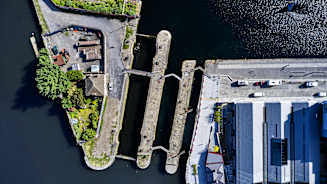Growing supply chain complexity, climate change, cyber security threats, geopolitical tension — these are just some of the factors altering the business landscape. Companies are managing risks that are changing rapidly and unpredictably, and many find that traditional insurance products haven’t kept pace. As a result, companies face coverage gaps, claims payment delays and premium cost hikes, among other issues.
Risk managers are responding by increasingly looking to alternative risk transfer (ART) solutions for potential enhancements in managing risk, optimizing total cost of risk (TCOR), mitigating insurance pricing volatility and accessing risk capital more strategically. Enabled by both data and analytics and a problem-solving lens, ART solutions can help companies not only cover risk and manage volatility, but also protect balance sheets and create a foundation for growth. Today, brokers, risk managers, boardroom stakeholders and industry players are assessing how innovative ART solutions can rise against their clients’ greatest challenges.
Turning to ART Solutions: What to Know
All companies considering ART solutions should start with their objectives and what they’re trying to solve — doing so will help form a tailored, strategic solution that complements their broader risk management and risk financing strategy. Some companies might be focused on natural catastrophes and climate volatility, where insurance capacity is shrinking; others might need non-physical damage business interruption insurance to manage cash flow when unexpected events disrupt operations.
Taking a data-driven approach can help businesses understand exposures — both the expected risks and the range of probabilities that can occur in a changing risk landscape. From there, companies can establish their risk appetite and tolerance, assess the available insurance and risk financing solutions and find the strategic mix that works best for them. Experts can arm risk managers and the C-suite alike with data and modeling to help make decisions that support the organization’s risk and business strategy — and in turn, protect against risks, such as non-damage business interruption, which is not typically covered by traditional insurance.
There are several alternative solutions companies can use to access capital, manage costs and target growth. Parametric solutions, structured solutions and captives all provide financial value and flexibility as part of the overall risk management strategy.
Parametric Solutions
Parametric insurance has increasingly been on companies’ radars, especially in hard markets like global property, where natural catastrophe losses and other risks present challenges. The global parametric market is expected to grow significantly, indicating demand from businesses. Transparency, flexibility and speed of liquidity are some of the key reasons why companies are turning to parametric solutions as part of their risk management strategy and determining how they fit within the broader suite of risk management tools.
Parametric works on an “if-then” basis, tied to a pre-defined event triggering an agreed payout rather than a “traditional” claims adjustment for actual loss sustained. Coverages are available for existing and emerging risks, from natural catastrophes to non-physical damage, cyber, supply chain issues and more. The increasing severity and frequency of natural catastrophes is pushing parametric solutions to the top of many risk managers’ agendas.
For example, a retailer that sells goods shipped through an earthquake-exposed port can’t traditionally insure the port even though shipments could be affected. With a parametric policy, that retailer can cover its losses if a pre-defined level of disruption (that is, the parameter) is reached. Similarly, parametric coverage can provide the liquidity to allow employers to support employees when a natural disaster occurs in their area and wipes out internet access or causes destruction to their town and homes — ultimately helping to manage business continuity.
With companies challenged by growing business complexity, including their supply chains, parametric solutions provide a simpler and more straightforward way to cut through the process. Not only does parametric often cover emerging risk or more innovative areas that traditional insurance hasn’t yet sufficiently addressed, but associated claims settlement is swift, enabling efficient recovery and resilience.
































































































































































































